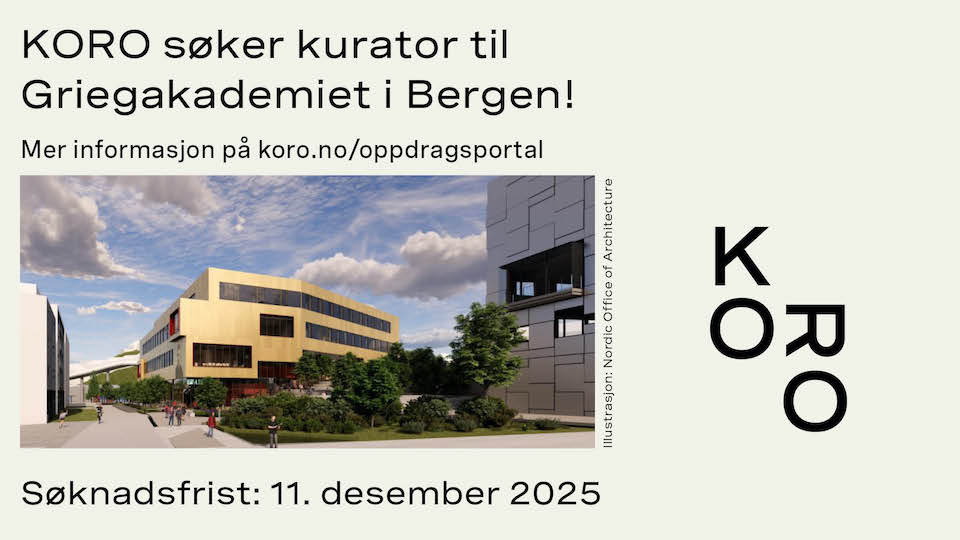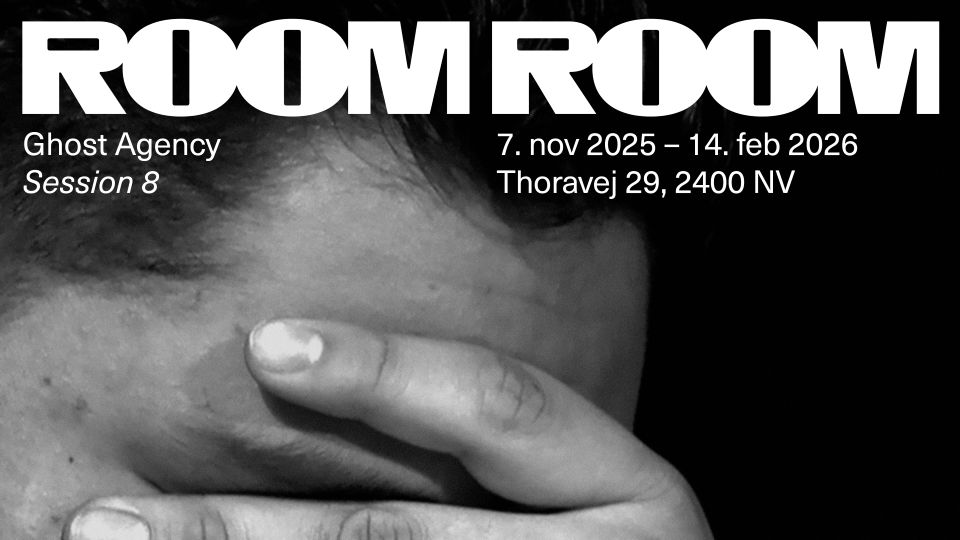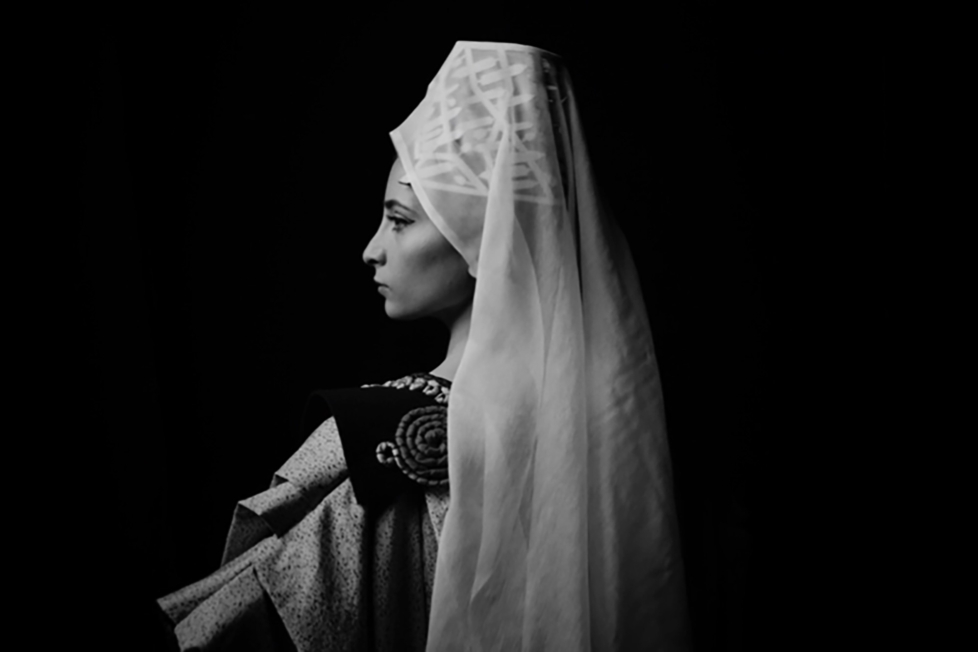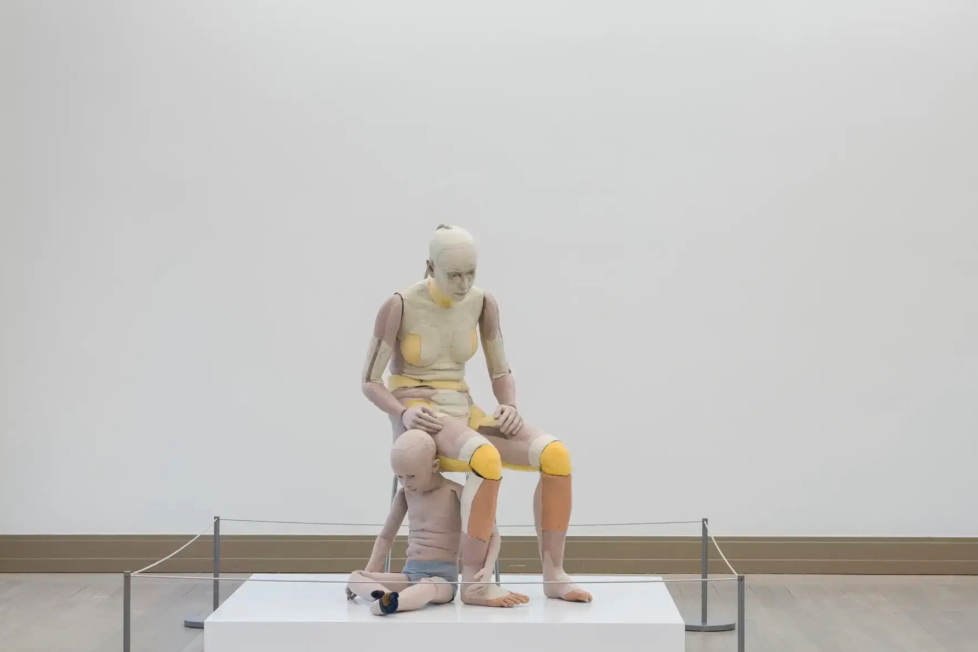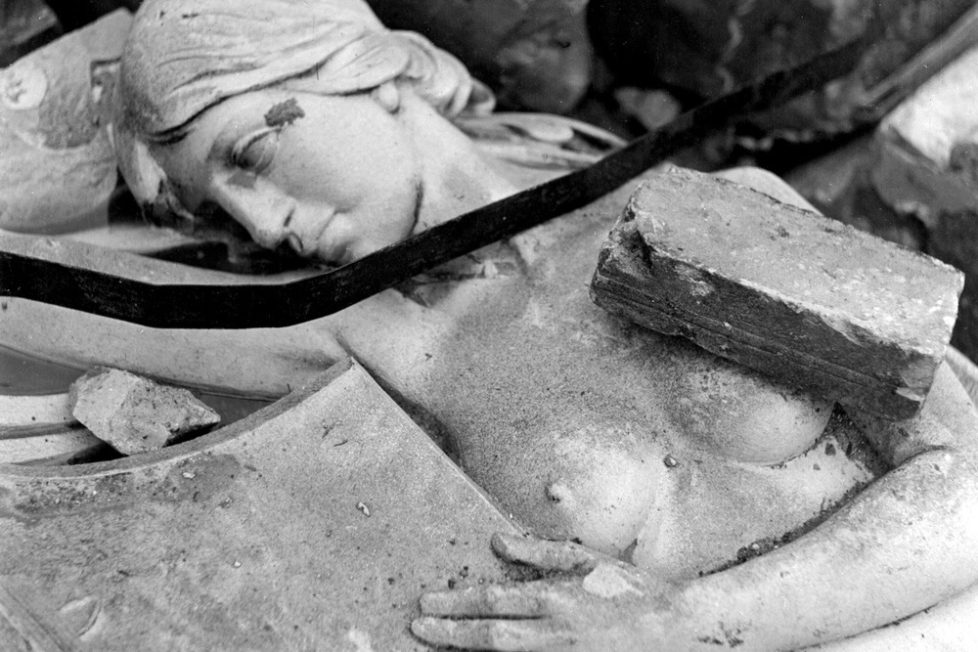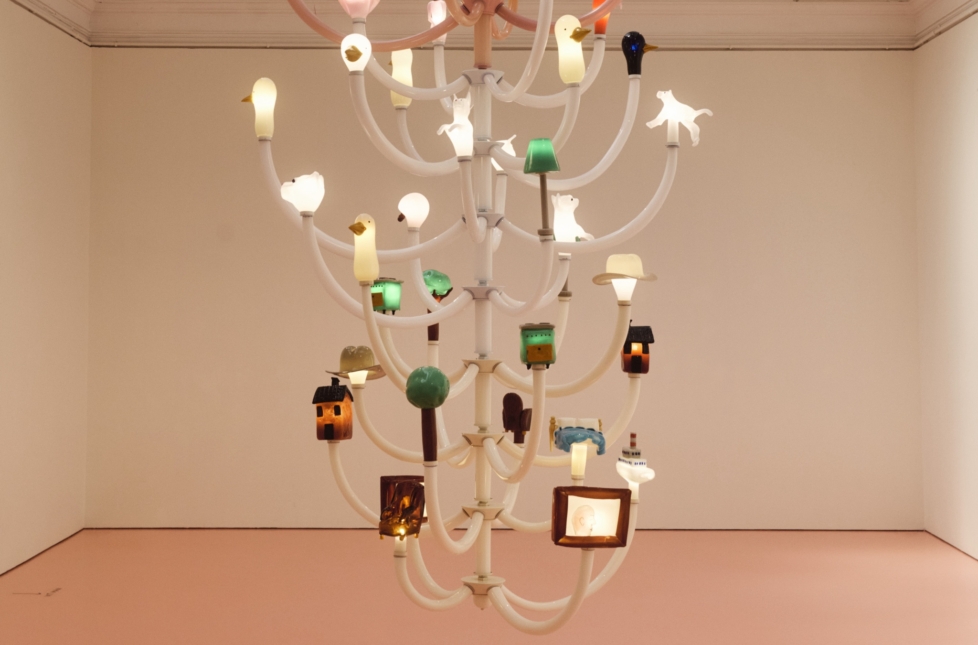
In Swedish politics everything is now at stake. Recent polling regarding the general election on 11 September gives majority to the new right-wing coalition, which consists of the “traditional” conservative parties together with the far-right Sweden Democrats (SD), which has been excluded from governmental alliances in previous election runs. The formerly liberal right’s Faustian bargain with the authoritarian far right has in no way limited SD’s appeal or mitigated their influence. On the contrary: it has compelled the other right-wing parties to play by SD’s rules, with clear and not very unpredictable effects. According to polls, SD is now the largest party within the right-wing coalition, by some margin.
This year’s election campaigns resemble no others, at least not during my lifetime. The right-wing coalition’s parties are struggling to surpass each other with increasingly shameless and bizarre proposals. Make all kids in “problem areas” submit to ADHD tests, say the Moderates. Put all immigrants on trains back to their “countries of origin,” SD respond. Longer and harsher prison sentences for younger criminals, the Christian Democrats counter. Vote for a Sweden wise with less hindsight, the Liberals offer. (What?) Reduce gas prices and make Sweden great again, concludes the SD, which is now – according to polls – Sweden’s second largest party, after the Social Democrats. An election victory for the right-wing coalition would give SD a dominant position, and there is no reason to believe they would be modest in using it.
This is a historically unprecedented situation in Sweden. When the ‘traditional’, formerly liberal right-wing parties enter into a political agreement with SD, they thereby give their direct and indirect support to the authoritarian, xenophobic, and climate-denialist far right’s international network, to SD’s sister parties and supporting movements in the Scandinavian countries, in Russia, in Brazil, in the US, and beyond. We are facing something resembling a popular front moment, when all voters to the left of the SD-led coalition must tactically set their political differences aside in favour of unity in resistance. All other questions, all disagreements or irresolvable differences between socialists, social democrats, centrists, and (actual) liberals must be put on hold, no matter how decisive they are. The barriers to the far right’s new offensive must stand.
To visit Documenta 15 in Kassel is to enter into a world incompatible with the contemporary far right’s worldview. I spent three days there at the peak of Swedish election campaigning, and it was a liberating experience (despite the fact that it almost ruined me). I did not have to constantly hear slogans about borders, national belonging, and ethnic purity, but instead met ideas of the land as a global commons which must be communally nurtured in order to make possible a dignified life in the age of climate crisis. I was not everywhere confronted with the fetishisation of the political leader’s awesome executive force and willpower, but instead heard tributes to forms of collective work and decentralised self-determination in networks of informal networks. I was not always enjoined to support the dystopian vision of a militarisation of civil society, with more police, harsher punishments, and intensified surveillance, but instead faced an attempt to renew the dream of a society based on an aesthetic education of the people, now set forth by a multitude of voices from the Global South. I met the experiences of the migrant and the stateless, not the nationalist.
Documenta 15 can be understood as a school for anti-fascist living. At the most general level, when seen as a coherent project or experiment, the exhibition, it appears, seeks to cultivate – educate, but also seed, care for, and grow – a sort of ecosystem of more or less artistic organisations, which together should contribute to establishing a cultural infrastructure for new social forms resistant to fascism’s values. In order to realise such a project, ruangrupa, the Indonesian collective which serves as artistic director for this edition of the exhibition, has chosen to distance itself from several of the guiding principles of the Western contemporary art system. To begin with, it discarded the idea of the curator – and of the international superstar mega-biennial curator in particular – as a sort of globetrotting talent scout who should provide critical and professional legitimacy to a certain number of artists in the art world’s economic system.
The participants in Documenta 15 have therefore not been selected according to some prestige criteria, but through networks of friends and colleagues. Ruangrupa invited fourteen collectives that it knows or has collaborated with before; those collectives have, in turn, invited further participants, individuals, or groups. The result is an exhibition with – depending on how and when you count – over one thousand participants, refreshingly few of which belong to the art world’s usual suspects. Furthermore, collective signatures have been prioritised over individual ones to an extent that at least I have not seen before. The exhibition’s planning and the organisation have been carried out in (mainly digital) democratic assemblies. The exhibition’s budget was redistributed to the participating collectives and individuals according to a model of communal sharing, and there are initiatives for guaranteeing sustained development, even after the one hundred days in Kassel. The resulting exhibition seeks to challenge the ‘traditional’ status of the artwork and the ‘normal’ nature of spectatorship in favour of new models based on open working processes and participation.

In other words, Documenta 15 is a complex attempt to fundamentally rethink the art exhibition as a social and economic system. It more or less explicitly returns to a radical and avant-gardist tradition of artistic, curatorial, and museological experimentation, seeking to renew that tradition from the perspective of a sort of international of autonomous artist collectives. In that sense, it is a project that appears perhaps more important than ever today, at the moment of the new far right’s international offensive, with its regressive policy implications, in culture and beyond. At the same time, Documenta 15 is not beyond reproach. As an exhibition, it is in several respects rather failed. What follows are some critical remarks about Documenta 15 as a general exhibition project, and about some of its guiding forms, concepts, and techniques.
(Let me note that I will not discuss the scandal about the anti-Semitic elements in one of the Indonesian collective Taring Padi’s large murals, which has already been given a disproportionate amount of media attention with severe repercussions for Documenta as both an exhibition and an organisation. For the interested, I recommend this interview with Taring Padi, Eyal Weizman’s clarifying account [behind paywall] of the mural’s iconography and the subsequent developments, Sven Lütticken’s annoyed but instructive blog post with advice about how to not become a useful idiot for far-right cultural warriors, and not least Andreas Schlaegel’s comment here at Kunstkritikk.)
Exhibition as school
Documenta 15, I wrote, can be seen as a school for anti-fascist living. The claim is my own, but it is not conjured completely out of thin air. In the curatorial texts, the exhibition’s pedagogical aspects are emphasised, and the importance of a sharing of knowledges between participants and guests is underlined. Several exhibition venues have been completely or partially transformed into something resembling seminar rooms or workshops, where different school-like activities take place or – more often – have taken place. The prestigious Fridericianum, traditionally the venue where documenta’s key curatorial statements are installed, has for Documenta 15 been renamed “Fridskul,” for “Fridericianum as a school”; many of the projects on display there take the forms of pedagogical activities or structures for housing such activities. Similarly, the enormous exhibition venue Hafenstrasse 76, an old factory building in Kassel’s industrial district on the eastern side of the river Fulda (where, remarkably enough, no earlier editions of Documenta have ventured), consists in large parts of sites for ongoing or – more often – past learning.
In what sense can an art exhibition be a school? As I understand it: in a metaphorical sense, not a literal one. The exhibition as a cultural and media-technical form has certain abilities that are not available to other cultural and media-technical forms, such as the book or the theater. An exhibition can be a spatial, multimedia, and, in certain respects, social form for the presentation, organisation, and mediation of complex aesthetic and intellectual objects, where the spectator is at the same time given a large degree of freedom.
When such abilities are put to use efficiently, the results can be fantastic, lacking apparent counterparts: correspondences and contrasts can be staged between objects from different art forms and media; relations and resonances between different sensible registers can emerge; complex and in some sense interactive arrangements of images, texts, sounds, and artefacts can be orchestrated; spatial montages and visual historiographies can be constructed – all in ways distinct to the exhibition as form. In that respect – because an exhibition can give rise to specific aesthetic and intellectual experiences, even to a particular mode of knowledge – it can make sense to say, metaphorically, that an exhibition is a school.

Something along these lines is, to take one example, what happens at the mini-exhibition set up by the collective Inland at the natural history museum Ottoneum, close to Friedrichsplatz in central Kassel. Inland is a group of architects, artists, anthropologists, and economists who work with “the rural question,” as they themselves put it. The mini-exhibition at Ottoneum is an arrangement of elements – documents and artefacts from Ottoneum’s collection, found and newly made films, sound recordings of ethnographic experiments, carefully edited excerpts from sociological and anthropological texts, sculptures and paintings – that in different ways address the violent transformations of the rural landscape, from early modernity until today. The topic is, of course, completely ungraspable in its near-total scope, and the arrangement’s composition of different elements does nothing to reduce their wild heterogeneity.
But, still: as we move through the exhibition spaces, as we start to make sense of texts, as we understand how a motif in a painting in one end of a room relates to a problem presented in an interview in a documentary film in the other end, as we realise what an architectural model means in relation to a series of artefacts displayed in vitrines along the adjacent wall, as the peculiar noises in the soundtrack become legible in connection to the general development that begins to assume shape out of the network of relations – as all of this happens, gradually, in spite of all, a sort of higher, non-reductive, non-synthetic form of coherence emerges which is not like that of any other form of presentation. The exhibition as form can teach us to see context in and through differences, and vice versa.
But the exhibition as form also has limitations which make it ill-suited for certain uses. For example, an exhibition is almost always temporary, both in the sense that it is open during a limited period (such as Documenta’s one hundred days), and in the sense that visitors rarely or never spend limitless amounts of time there (my own three-day stay in Kassel was probably not much shorter than that of most other visitors; in any case, I had neither the time nor the means for more). A school, on the other hand, requires continuity. Students and teachers must have the time to get to know each other, gain confidence in each other; readings, practices, and discussions must have time to sink in, be digested; there must be time for a development to take place.
A real school must also confront a number of practical problems. Where should students and teachers live? How should students make a living during their studies? Should anyone be welcome to join the school? If so, how should unequal recruitment be avoided? If not, according to which criteria should the selection be made? Economic ones? Collegial ones? Local belonging? Nationality? Excellency? A teaching situation that does not permit such continuity is in any case not a school, but perhaps a workshop, or a symposium, or a congress. Exhibitions can incorporate workshops or symposia or congresses, but they cannot literally be schools without rendering the concepts of both “exhibition” and “school” meaningless.
The problems and contradictions inherent to any attempt at claiming that an exhibition is literally a school, are present at Documenta 15 as well. The collectives behind the exhibition have chosen two ways of seeking to resolve them; both are based on the idea of a liberation from spectatorship.
On the one hand, there are moments in Documenta 15 when it seems like ruangrupa and the other participants have simply decided to make an exhibition exclusively for themselves, in the form of a sort of summer school for socially-engaged artist collectives, and for which the undefined visitor of the public art exhibition – the ‘spectator’ – is irrelevant. The internal networking and sharing of knowledges between the participating collectives are presented as essential aspects of the exhibition project, and there are resources that facilitate long-term stays: dormitories, social kitchens, etc. These are not simply behind-the-scenes resources (the travel arrangements, hotel nights, restaurant visits, etc. that a ‘normal’ mega exhibition can provide to its participants), but are actively evoked as elements of the exhibition at the same time as their public accessibility appears to be limited. And even if they were completely accessible to an open public, what exhibition visitors would have the means to actually use them? Who would have the time to actually become students or to participate in long-term collective working processes?

The less drastic solution to the problem of the viewer is to assert that the viewer as a concept and a social function is outdated. “We try to produce a new aesthetics – an ethical paradigm where the viewer is obsolete,” as it says in a mind map reproduced in the exhibition’s handbook. It is not a very original idea: the spectator should become a participant; passively distanced contemplation should be replaced with actively present practice. The central mediating form for this transformation at Documenta 15 is what ruangrupa and the participating collectives call “harvest,” which should provide a ‘process-based’ alternative to the artwork’s ‘static’ form, with its implied passive spectatorship. “Harvests,” the handbook explains, are “artistic recordings of discussions and meetings.” They are what should resolve the contradiction between the long-term continuity of the school and the limited time of the exhibition. Their purpose is to “share what is being discussed with absent members and the general public.”
After having seen very many “harvests” during my visit to Documenta 15, I can establish: it does not work. Concretely, they consist of more or less quickly improvised notes, sketches, flowcharts, mind maps, and diagrams. The more carefully executed ones, some of which are reproduced in the handbook and other publications, are sometimes illustrated with funny figures and motifs, sometimes set in more vivid colors. But most of the “harvests” I see resemble what remains on a whiteboard after a lecture, if the lecturer enjoyed drawing arrows and circles around things. As an intellectual form, they are in themselves insufficient: they do not allow us to understand something of the workshop we missed; we need a workshop to understand them. As an aesthetic form, they rarely attain a higher degree of complexity than a captioned pictogram or perhaps some quick comic book sketch.
Which is not to say that “harvests” would be incompatible with the status of artwork. Not many things are, after all. (“This is a portrait of Iris Clert if I say so,” comes to mind.) But “harvests” would not be very good artworks, if their status as such were to be asserted. And not in the sense that they would lack some mystic quality, some je ne sais quoi that could be transformed into value in the art world’s speculative economy, but merely in the sense that their aesthetic form is simple and does not allow for complexity. To visit the parts of Documenta 15 where “harvests” are a dominating feature is a somewhat exhausting experience. After a while, I simply stop trying to read them. The notes and the sketches and the fuzzy diagrams flow together into an undifferentiated mass, the very opposite of the complex coherence-through-heterogeneity that an exhibition can propose.
Which economy?
If Documenta 15 has a critical and transformative potential today, it is therefore not to be found in how it sets artistic processes, “harvests,” and participation against passive spectatorship and the artwork as a commodity and fetish. Instead, it must be sought in how ruangrupa and the participating collectives propose a different way of organising the exhibition – and perhaps, by extension, the art world as such – as a social and economic system. How does this work? What can we learn from Documenta 15? Here I can only attempt to summarise and pose some open questions, since the information is somewhat difficult to assemble, and since the project is still under development.
The guiding concept for Documenta 15 is lumbung, an Indonesian word that denotes a sort of barn where a community stores its harvest of rice. A part of the harvest is transferred to a communal pot, for use in emergencies. For Documenta 15, ruangrupa and others have translated this into a model for thinking an exhibition economy based on democratic redistribution and communal ownership. To begin with, each one of the fourteen collectives that were directly invited by ruangrupa and its team at Documenta was given a budget of EUR 25,000 in “seed money” – unconditioned money, a sort of advance fee – as well as a production budget of EUR 180,000 to finance their participation in the exhibition. The fifty other participants, both individuals and collectives, were given between EUR 5,000 to 10,000 in “seed money” and a production budget of EUR 60,000. All of the participants then placed EUR 20,000 of their budgets in a communal pot for use “during the exhibition,” according to democratically made decisions.
This seems like a fascinating, but also somewhat cumbersome exercise in establishing a system for internal taxation and redistribution within a limited exhibition economy. It is not apparent, however, how such a model could be relevant after, or have long-term effects beyond, Documenta 15, with its considerable budget (EUR 42 million, around half of which comes from public funds, according to an article in the Guardian) which must be spent in total before the end of the one hundred days.

The more long-term and potentially transformative perspectives must therefore be sought in how the collaborating collectives have attempted to establish new business models that grant more favorable conditions to themselves and others working in similar situations. Here they have, on the one hand, created what they call lumbung Kios, a “network of decentralised and self-run kiosks trading goods made by the artists,” where a portion of the revenues will go to a communal pot which is not constrained by Documenta’s time limits and budget restraints. On the other hand, they have established lumbung Gallery, a “co-operative gallery” based on communal ownership, pricing according to collective needs, and the aim to “‘transvest’ resources toward a more commons-based exchange.”
The lumbung kiosks can be found here and there in Kassel. They resemble a sort of mix between street market and museum shop, where visitors can buy t-shirts, posters, small scale craft objects, and multiples. I would be surprised if their sales figures were very high. The lumbung gallery, on the other hand, is a potentially interesting model, but it still appears to be in a developmental phase. It exists now as a webpage created in collaboration with the website TheArtists, from which one can send in price inquiries about some of the works in the exhibition.
What are the social and political implications of these business models? At which level do they operate? As ruangrupa has noted, its collective emerged out of the necessity to establish a sustainable structure for communal life and work against the background of the “total failure” of the Indonesian state at the end of the 1990s, when the Suharto regime was overthrown and Indonesia entered into a comprehensive economic crisis [The Collective Eye, Thoughts on Collective Practice: In Conversation with ruangrupa (Berlin: Distanz verlag, 2022), 46]. It writes in the handbook that just like many of the collectives in Documenta 15, it comes from a context where “the state had failed to support the development of infrastructure and a support system for art and culture.” A lack of trust in state or super-state institutions marks ruangrupa’s political outlook. The ecosystem of cultural organisations that it wants to cultivate with Documenta 15, should therefore be located at a sort of infra- or micro-political level, before or beneath state level.
The question is whether this is a sufficient or meaningful way to think the social and political potentials of a mega-exhibition with a gigantic and mostly publicly funded budget. Of course, I do not mean that ruangrupa or other participants should express greater gratitude to the taxpayers of the German federal republic or the state of Hesse; I mean that I do not see how the model that they’ve developed could be generalised, that is, become political in some more eminent meaning of the term, without critically interrogating its own political and economic conditions or proposing an alternative. How could this become an applicable or even theoretically coherent model for thinking the economy of the international of autonomous artist collectives, which at the same time figures at the social and political horizon of Documenta 15 as a project?
Lumbung gallery’s aim to “‘transvest’ resources toward a more commons-based exchange” is in this respect interesting, but it remains somewhat mystical, and it is hard to see how such a model could by itself have some sort of transformative effects at a larger cultural and social scale. The concept of the “commons” – neither state sanctioned public sphere nor ‘free’ market – also appears to assume something of a magical role here, as a sort of placeholder for the political and institutional level that is precisely not taken into consideration. But if that level is dismissed, is there not a risk that the result is simply exposure to the wilfulness of pure market forces? Is there not a risk that the whole thing becomes libertarianism and small business ventures? It is difficult to see that as a path toward a more sustainable ecosystem.







